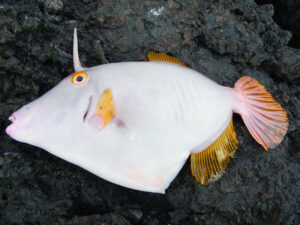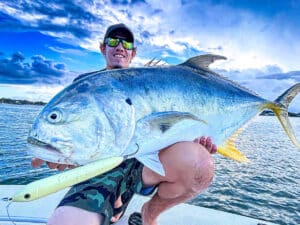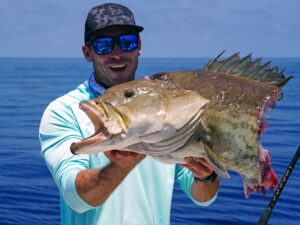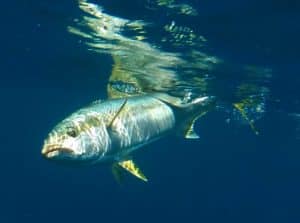Video Courtesy of AFTCO
Editor’s Note: In mid-September, AFTCO president Bill Shedd and a team of Coastal Conservation Association California anglers assisted noted bluefin-tuna-tagging expert and Stanford University professor Barbara Block, Ph.D., in a new joint-venture tagging project for Pacific bluefin. Above is a video about the project, and below is Shedd’s report from the field.
I was manning the kite rod, looking directly at the rigged flying fish as it drifted under the kite, when an enormous splash shattered the surface. Our captain, Michael Stotesbury, flew into motion, and our crew began retrieving lines as I wound tight to an estimated 250-pound Pacific bluefin tuna.
Stotesbury’s brother, Greg, who is sales manager at AFTCO, and Dave Elm, AFTCO production manager, equipped me with gloves, harness and belt: game on!
But this would be no ordinary stand-up fight with a big-shouldered bluefin. Our crew aboard the 33 Owens Brigantine Flying Fish pursued a cause: a new joint effort to successfully satellite‑tag large Pacific bluefin tuna.
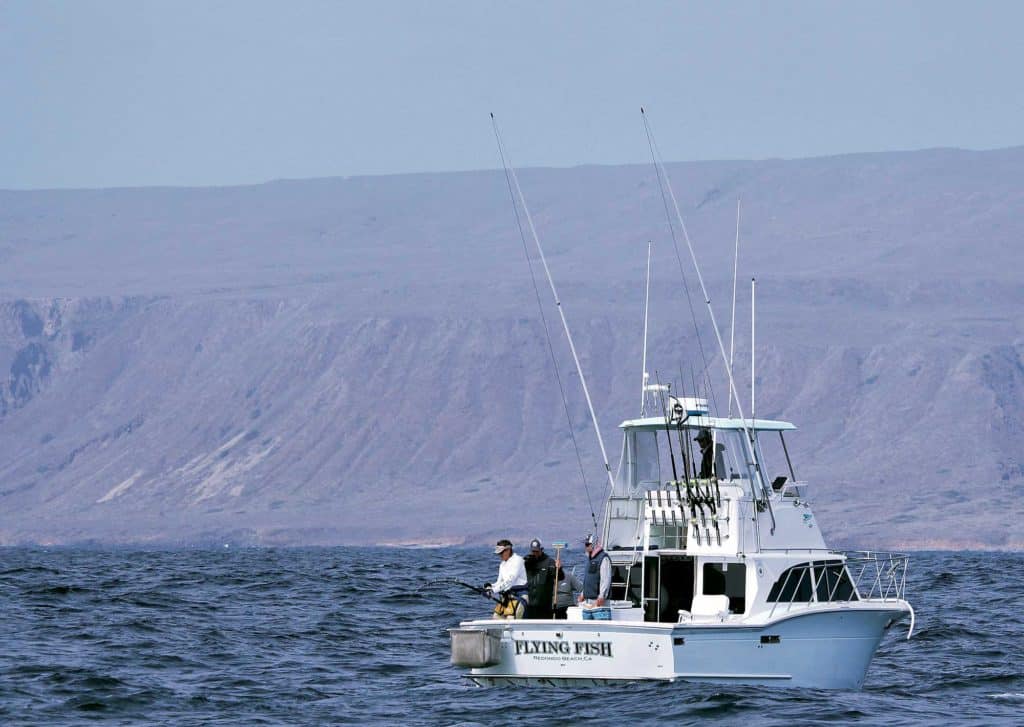
Pit Crew
An hour later, the fish came alongside our vessel but was still too hot to transfer to the tagging boat, Quiteña, where Stanford biologist Barbara Block and her team remained poised to surgically implant archival and pop-up satellite tags.
After another 10 minutes, we had gained control of the fish and called Quiteña to throw us the tennis ball that would deliver its swivel and line. Greg controlled the leader, Elm snapped on the swivel, and my line was cut, leaving Paul Fruchbom on the tagging boat suddenly hooked to the fish.
Fruchbom reeled the large bluefin to his boat, where the crew quickly brought it through the transom door, sliding it onto a wet, slippery vinyl mat designed to protect the fish.
The scientific crew placed a wet towel over the tuna’s eyes and a saltwater hose in its mouth to keep it calm. Block and her team — research scientist Robert Schallert and graduate student Guillermo Ortuna — completed an incredible amount of work, including measuring the fish’s length, surgically inserting and externally attaching two types of electronic tags, and taking a DNA and mRNA sample, all in about four minutes. They spun the mat, and the bluefin easily slid headfirst back into the water.
Shortly afterward, Block called from the VHF radio to congratulate the Flying Fish team. “Bill, I remember when your dad supported my tagging efforts 20 years ago,” she said to me, “and how he worked with and supported my mentor, Dr. Frank Carey, with some of the early sonic tagging. As I watched you just now, I have no doubt that your dad would be very proud of you.”
Coast to Coast
In the late 1990s in North Carolina, Block worked with sport fishermen, including my father, Milt Shedd, to help start her Tag A Giant (TAG) program in the Atlantic. What a thrill it was for me to be there with Dad and Dr. Block then, and now again with Block’s team, Coastal Conservation Association California, AFTCO team members and other concerned anglers to begin to duplicate in the Pacific some of what has been accomplished on the East Coast.
Block has been tagging Atlantic (and some Pacific) bluefin tuna for 25 years to determine migration patterns and life history of northern bluefin tuna, which assists in global fishery-management decisions. With this new project, Block hopes to tackle some important issues on the West Coast, such as when and where the big bluefin go, and whether they will return to Southern California to feed or to the western Pacific Ocean to breed next year.
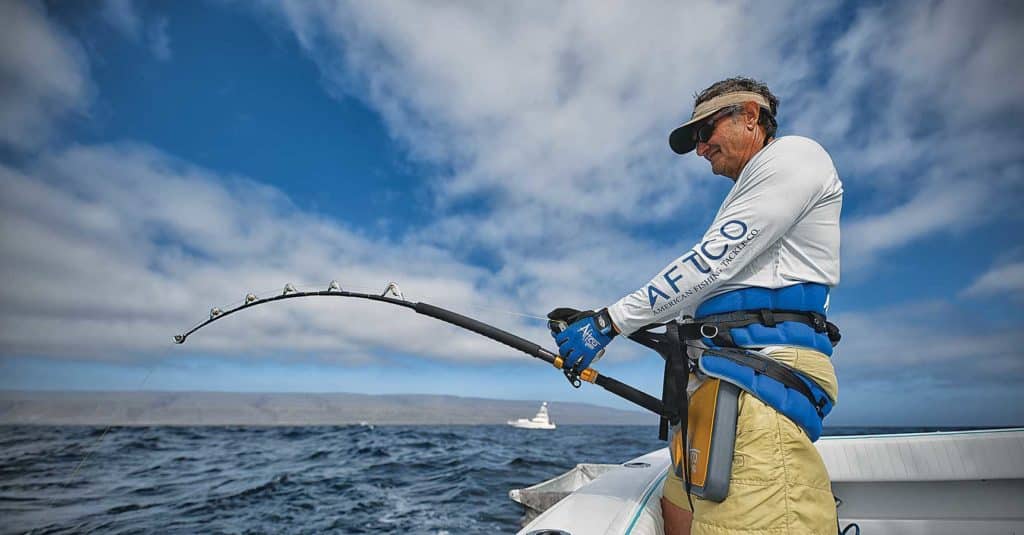
Bluefin over 150 pounds were all but absent in California from the 1940s until 2015. Block and her team started tagging the big tuna in 2016, after tagging two- to four-year-old fish from 2002 to the present. Her major focus now is determining when and where these large bluefin spawn in the waters off Japan and Taiwan.
CCA CAL has teamed with Block’s Tag A Giant crew and organized the sport-fishing community to provide not only funding, but also private boats to help catch the bigger fish Block wants to tag. The mid-September trip became Block’s first attempt to capitalize on the same techniques she pioneered in the Carolinas in the mid-1990s, where she and the team have tagged more than 1,000 Atlantic bluefin. The answers are not only of interest to anglers, but are also critical to the future existence of the Pacific bluefin.
Read Next: Kite Trolling for Pacific Bluefin Tuna
Current fishery-management models for these West Coast fish, run by the international committee that manages the species — the International Scientific Committee for Tuna and Tuna-Like Species — estimates the biomass of Pacific bluefin with an age of initial reproduction at three to five years. Block believes that many Pacific bluefin spawn later in their life cycle and has recent scientific results that support an older age of first spawning.
“We have, in the past three years, been tagging Pacific bluefin of year classes that are now five to eight years old here in our California waters, and to date, these large fish have returned to western Pacific waters at eight years of age. In addition, we have examined some of the sport-caught fish, and we’ve noticed that none of the female bluefin tuna are reproductively active, although some are close,” Block says. “So it leads us to believe that the bluefin tuna we are fishing off San Clemente and 60-Mile Bank are spawning at approximately eight years of age or older — much like the Atlantic bluefin tuna population of the Gulf of Mexico.”
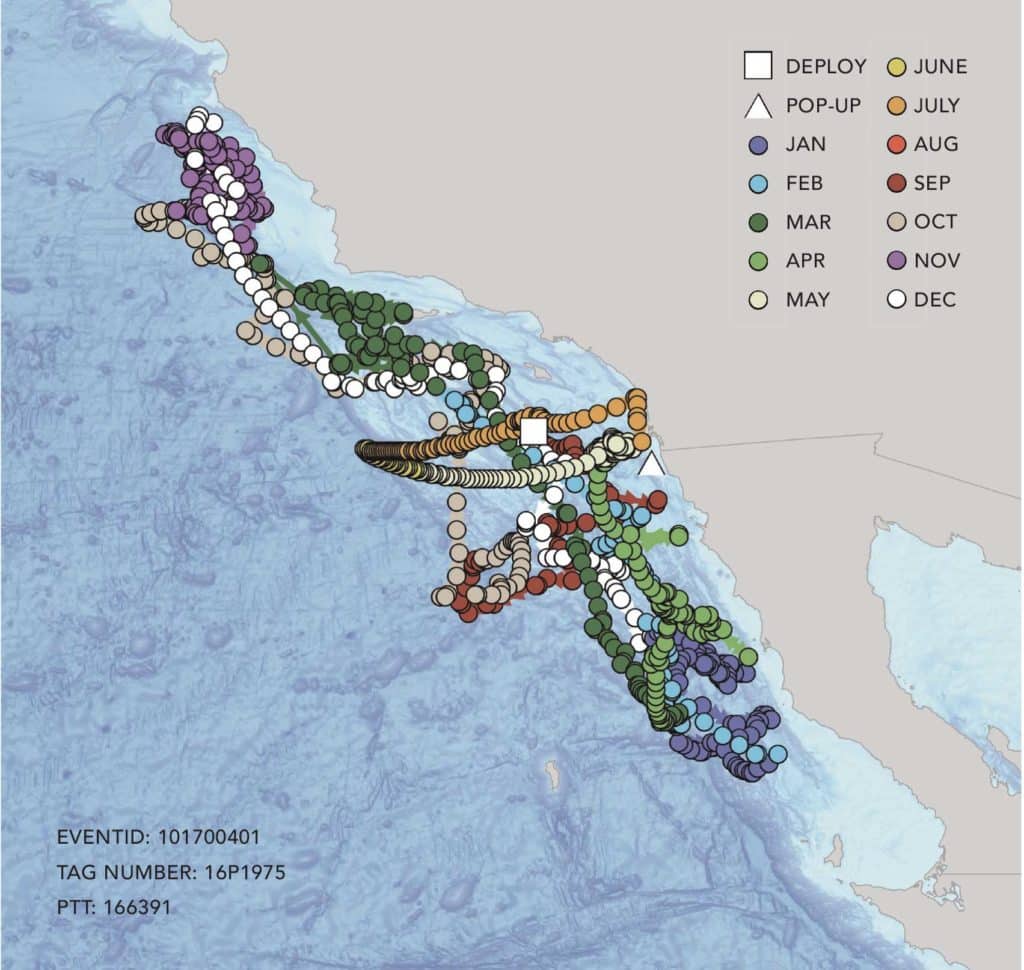
Block believes that once a fish reaches seven to eight years of age (at roughly 200 to 300 pounds) in California waters, it most likely travels back across the western Pacific to spawn primarily in waters to the east of Taiwan or off Japan. The juveniles spend their first year feeding nearby, and then an unknown fraction of one- and two-year-old fish — most weighing less than 20 pounds — journey to the eastern Pacific Ocean and reside in the California Current, where they swim from Mexico’s Magdalena Bay to the waters off southern Oregon during their annual north-south migrations.
Even though California’s current bluefin tuna fishery seems the best it has been in almost 100 years — due to water conditions and an abundance of prey species such as anchovies and pelagic red crabs — the total Pacific bluefin population biomass is reportedly in very poor shape. The main reason cited: Japan, Korea and other foreign countries on the western side of the Pacific catch too many small fish.
Breeding-size tuna are also caught on their spawning grounds primarily by Taiwanese and Japanese fishermen. If the Pacific bluefin’s spawning age proves to be older than currently understood, then a better case can be made for more properly managing the small bluefin and breeders in the western Pacific.
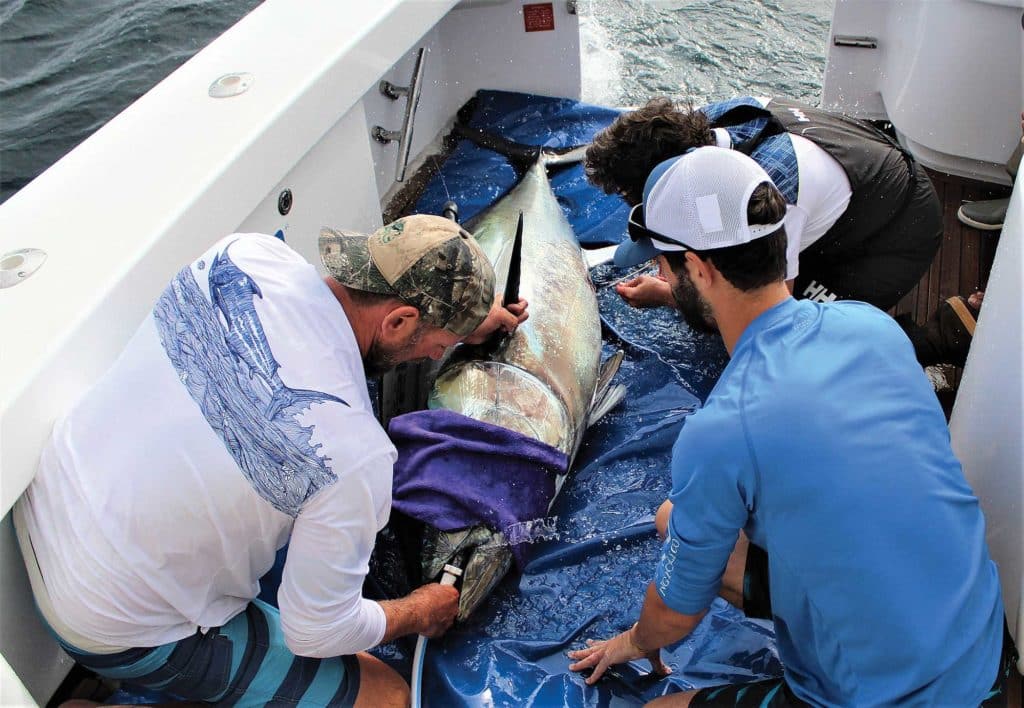
Tracking Tags
While Block’s team has attached archival tags — suitable for smaller fish — to more than 800 two-, three- and four-year-old bluefin tuna in the Pacific, during a multispecies tagging program called Tagging of Pacific Pelagics (one of the largest electronic-tagging programs ever conducted), this new joint effort aims to tag larger bluefin, weighing more than 150 pounds, with pop-up-satellite and archival tags that will chronicle their journey in two different ways.
“By putting two tags on the animal, we are able to first track it for a year with the pop-up satellite tag,” Block says. The pop-up tag — generally a $4,000 investment — “is a sophisticated oceanographic instrument that we program to stay on the fish for a year, and it automatically releases from the fish after the specified amount of time.” The tag records light and time, which along with sea-surface temperature, can be used to estimate position, thermal preferences and diving behaviors of the fish.
The archival tag is surgically implanted internally next to the stomach and can provide up to five years of information, including the body temperature of the fish, which informs the scientists daily how many calories the fish consumes. However, the fish must be caught and the archival tag returned — for a reward — by an angler. To date, more than 50 percent of the 800 bluefin tuna archival tags have been recovered, an incredible recapture rate that confirms the high mortality of these fish in the enormous Pacific Ocean.
The pop-up and archival tags record light, temperature and pressure. These data points allow the team to compute the fish’s track and its behaviors, diving and surfacing in the water column. By using electronic tags to track the journeys of the tuna, the team can provide sophisticated spatial and temporal data on movements and habitat preferences to help better understand migration and the timing of maturity, based on the movements of the fish back to the spawning grounds.
During our September outing, we successfully captured seven Pacific bluefin, up to 72½ inches curved fork length and an estimated 250 pounds, and tagged them off San Clemente Island. (Fish with archival tags also sport a green conventional tag as a signal to fishermen.)
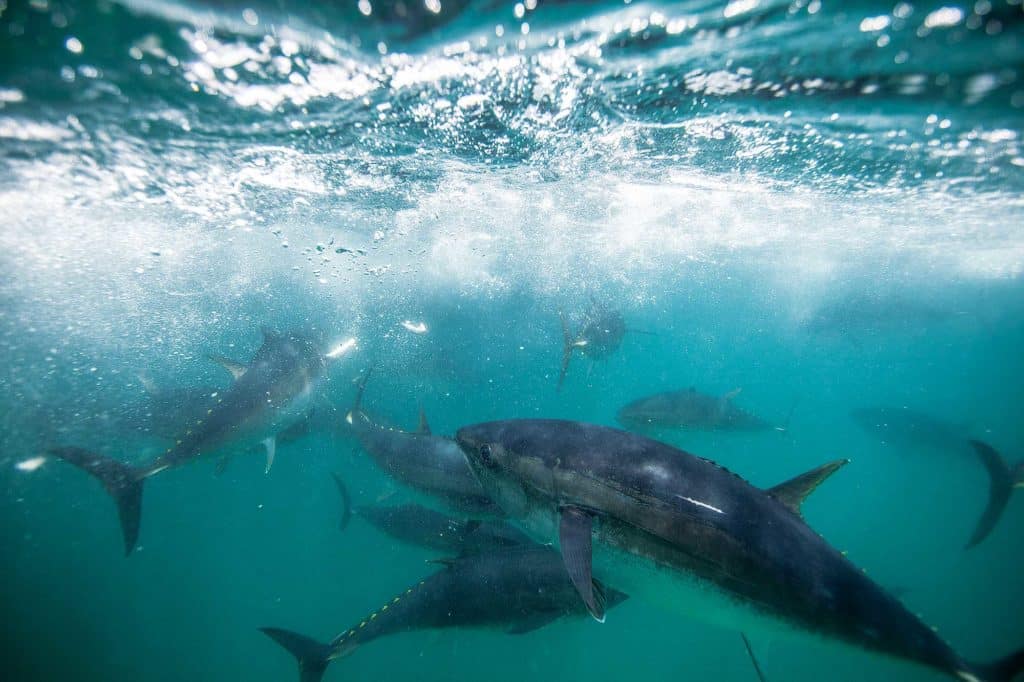
Tuning Tactics
Preferred techniques to catch larger bluefin change each year. Stotesbury, whose boat caught the 131-pound bluefin in 2015 that helped signal the giants’ return, says, “The techniques we’re using to catch these big bluefin are constantly evolving due to our learning more about how to target them in the morning, evening and nighttime hours, when they are more-actively feeding, but also during midday.”
When the big bluefin first showed up off California in 2015, Stotesbury used run-and-gun techniques, fishing with live mackerel as well as poppers cast to foaming or breezing tuna spotted using gyro-stabilized binoculars. “In the morning and evening hours, we’d drift with squid suspended under a balloon at 50 to 250 feet, using glow sinkers and positioning the bait at the depth the fish showed on our sounders,” he adds.
Heavy, glow, Flat-Fall-style vertical jigs also work extremely well when fished at the depths the tuna are feeding during the prime pre‑daylight and evening hours.
“These techniques were successful, but we found that drifting fresh live or rigged flying fish we capture at night around the islands was far more effective,” Stotesbury says. “While others continue to troll the Yummee Flyer under kites, using a kite or balloon with fresh flyers on the surface draws explosive strikes all day from big bluefin.”
This technique also allows for the use of heavier, 200-pound fluorocarbon leaders, larger 9/0 circle hooks, and heavier tackle, which is suspended above the wary and sharp‑eyed bluefin.
With this year’s successful transfer of a large Pacific bluefin from boat to boat, the stage is set for more tagging trips. In August 2019, CCA CAL plans to bring others together in the sport-fishing community to support Block’s efforts to place more pop–up satellite tags in these West Coast tuna. Block says that if the local anchovy and red crab populations remain abundant, and the waters remain cool and productive, California anglers should have more years to target these large fish in these waters.
For more information about this Pacific bluefin tagging project and other CCA CAL efforts, visit ccacalifornia.org.
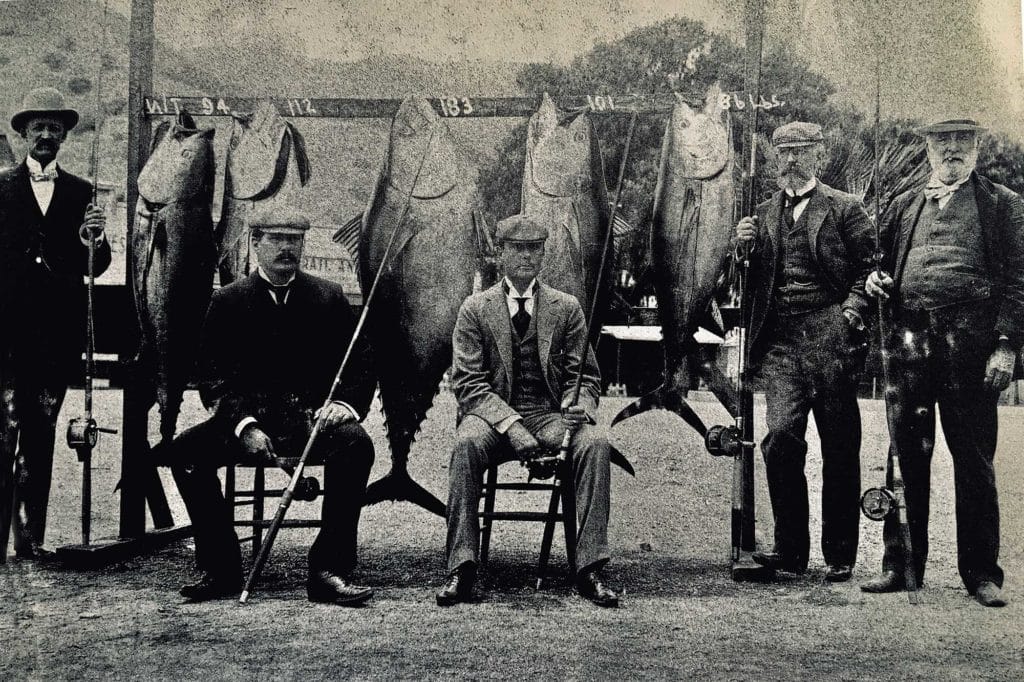
The Comeback
Saltwater big-game fishing in America started in California on Catalina Island with the founding of the Avalon Tuna Club in 1898. Back then, 100-plus-pound Pacific bluefin were abundant. Then the commercial purse-seine fleet emerged.
By the late 1940s, the bigger bluefin were all but gone. No locally caught bluefin weighing more than 100 pounds landed on the Avalon pier until June 2015, when anglers hung a 131-pound bluefin on the scales at the famous green pier.
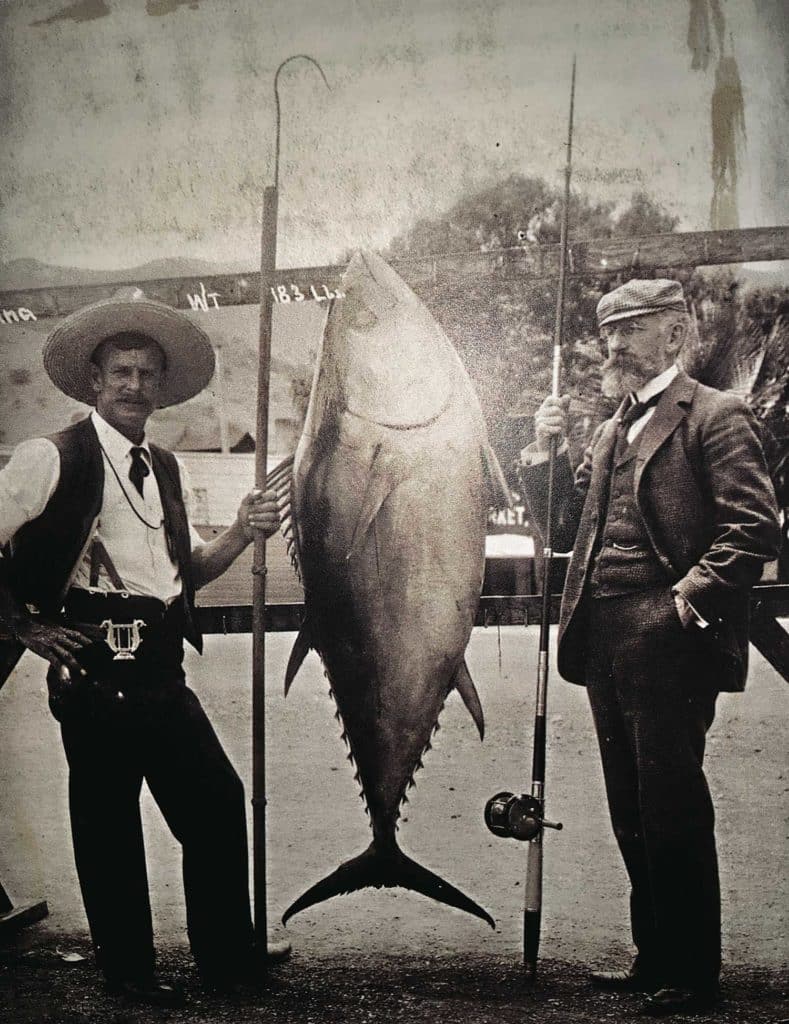
After being all but absent, large bluefin had finally returned to Southern California waters within anglers’ reach. Since then, they have returned every year, growing roughly 50 pounds larger than the year before. While still not an everyday catch, bluefin in the 100- to 200-pound class are routinely captured each season, from July through November.
Until the late 1990s, scientists believed that Pacific northern bluefin (Thunnus orientalis) belonged to a subspecies of Atlantic bluefin (Thunnus thynnus), but they have since been differentiated with genetics. Pacific bluefin grow to a maximum size of 1,200 pounds and live about 20 years; Atlantic tuna grow to about 1,500 pounds and reportedly live up to about 35 years.
About the Author
Bill Shedd is president of AFTCO, serves as CCA CAL and Hubbs SeaWorld Research Institute chairman, and sits on the boards of the International Game Fish Association, the Center for Sportfish Policy, and the Guy Harvey Ocean Foundation. For more than 30 years, he has spent 500 hours annually working on marine-resource and sport-fishing-industry issues.

